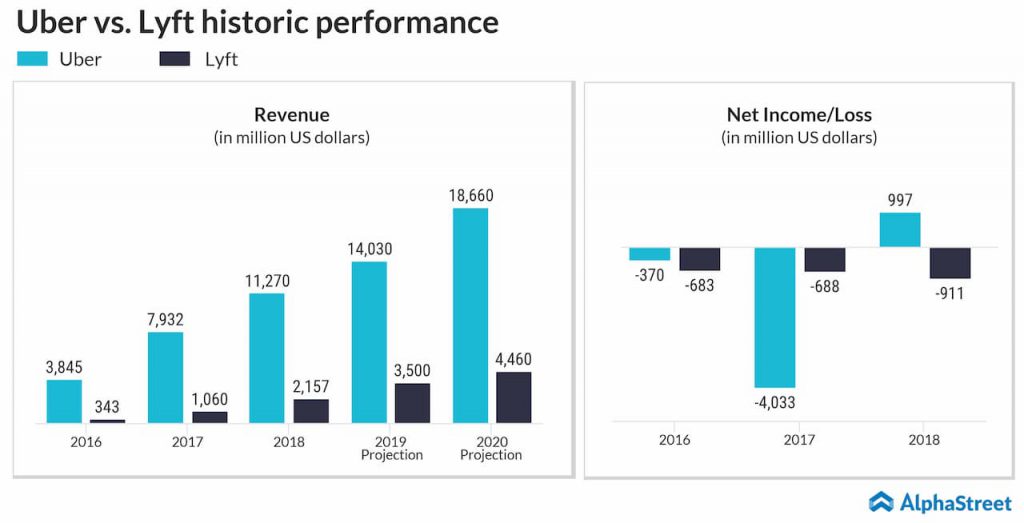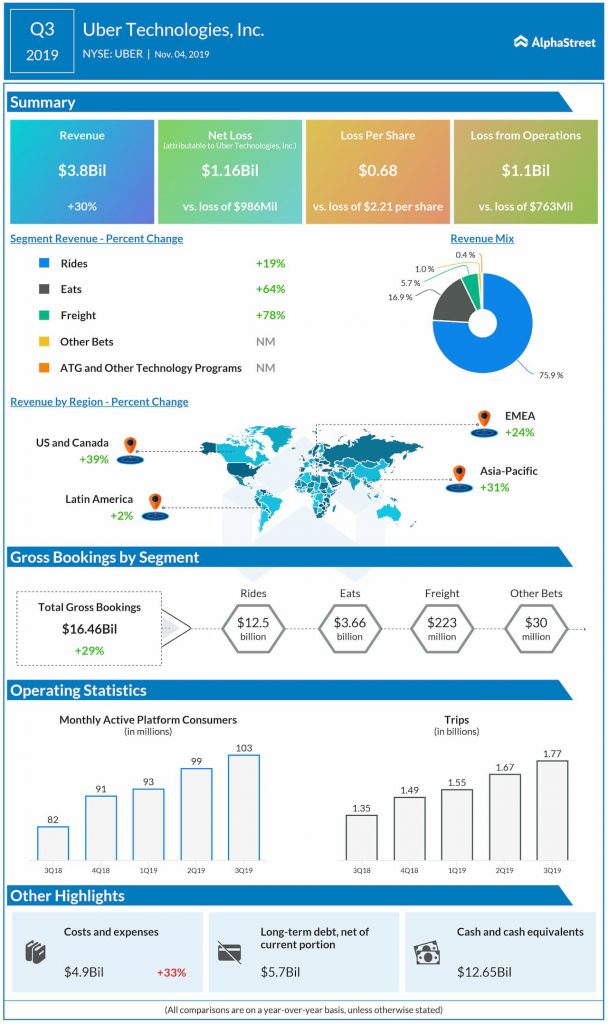Categories AlphaGraphs, Earnings
A brief look at the pros and cons of investing in Uber Technologies (UBER)
Though the business model followed by ride-hailing companies appears simple and straightforward, Uber Technologies (NYSE: UBER) often faces regulatory action both in the US and overseas markets. Of late, there has been an increase in curbs on the company, mainly for violating antitrust rules.
Uber is not a profitable company yet, and the absence of a proper turnaround plan stresses the need for caution as far as investing in the stock is concerned. The fact that the prospects of the company turning profitable in the near term are bleak calls for a cautious look at its current valuation. Nevertheless, it needs to be noted that the online taxi firm is expanding market share consistently, which in turn strengthens the top-line.
Mixed Results
In the third quarter, revenues surged 30% to $3.8 billion, while net loss widened to $1.16 billion. The bottom-line has been hurt by heavy investments in product development and building of corporate infrastructure. The ambitious growth target set by the management also demands significant marketing spending.
While it is generally acceptable in the case of growth companies, the current trend remains a concern as cost-escalation could be an impediment when it comes to shareholder return. Also, Uber faces the uphill task of fighting with rival taxi firm Lyft (LYFT) for market share.
A Long-term Bet
In short, the situation urges the market to stay patient, which also makes the stock an ideal option for long-term investors. If Uber manages to maintain revenue growth at the current levels for long enough, shareholders will be handsomely rewarded in the next two years.
Also see: Uber Q3 2019 Earnings Conference Call – Final Transcript
In what could be yet another setback for the company, a German court this week imposed restrictions on its operations in that country, alleging anti-competitive practices. The ruling bans Uber from providing third-party car-hiring services to customers through its app.
IPO
Uber had a not-so-impressive Wall Street debut. Though the stock remained steady initially, it lost momentum a couple of months after the IPO, as in the case of several tech startups that went public this year. The stock, which is down about 28% since then, traded below the $30-mark this week. However, there has been an improvement since mid-November, after the stock slipped to an all-time low.
A similar pattern is visible in the performance of Lyft, which traded at $75 post-IPO before falling sharply in the following weeks. Both stocks continue to underperform the S&P 500 index, which has been in the positive territory throughout the year.
Most Popular
DRI Earnings: Darden Restaurants’ Q2 2026 sales and profit rise YoY
Darden Restaurants, Inc. (NYSE: DRI), a leading fine dining restaurant chain, on Thursday reported an increase in sales and adjusted earnings for the second quarter of fiscal 2026. Total sales
CarMax (KMX) Q3 2026 earnings drop on lower sales; results beat estimates
Used car retailer CarMax, Inc. (NYSE: KMX) on Thursday reported a decline in earnings for the third quarter of fiscal 2026, hurt by lower sales. However, both revenues and earnings
ACN Earnings: Key quarterly highlights from Accenture’s Q1 2026 financial results
Accenture (NYSE: ACN) reported its first quarter 2026 earnings results today. Revenues of $18.7 billion increased 6% in US dollars and 5% in local currency compared to the same period a


Comments
Comments are closed.